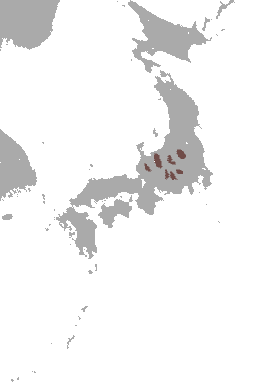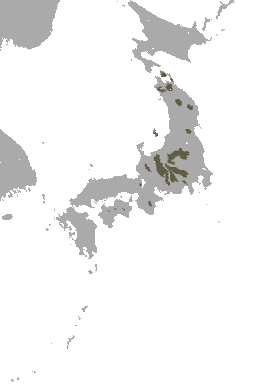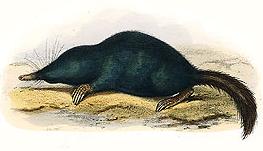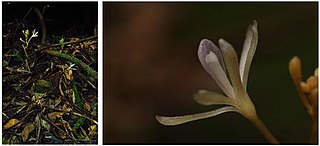
Man and the Biosphere Programme (MAB) is an intergovernmental scientific program, launched in 1971 by UNESCO, that aims to establish a scientific basis for the improvement of relationships between people and their environments.

The Russian Far East is a region in Northeast Asia. It is the easternmost part of Russia and the Asian continent; and is administered as a part of the Far Eastern Federal District, which is located between Lake Baikal in eastern Siberia and the Pacific Ocean. The area's largest city is Khabarovsk, followed by Vladivostok. The region shares land borders with the countries of Mongolia, China, and North Korea to its south, as well as maritime boundaries with Japan to its southeast, and with the United States along the Bering Strait to its northeast.

The Arctic warbler is a widespread leaf warbler in birch or mixed birch forest near water throughout its breeding range in Fennoscandia and the northern Palearctic. It has established a foothold in North America, breeding in Alaska. This warbler is strongly migratory; the entire population winters in southeast Asia. It therefore has one of the longest migrations of any Old World insectivorous bird.

The white-backed woodpecker is a Eurasian woodpecker belonging to the genus Dendrocopos.
The Hokkaido red-backed vole is a species of rodent in the family Cricetidae. It is found at high altitudes on the island of Hokkaido in Japan and at lower altitudes on some smaller islands nearby. Its natural habitat is temperate forests.

The Ryukyu long-tailed giant rat or Ryukyu rat is a species of rodent in the family Muridae. It is the only extant species in the genus Diplothrix. It is found only in the Ryukyu Islands of Japan. Its natural habitat is temperate forests.
The Japanese red-backed vole, Wakayama red-backed vole, or Anderson's red-backed vole is a species of rodent in the family Cricetidae. It is found only on the island of Honshu in Japan. It was first described by the British zoologist Oldfield Thomas in 1905. Thomas named it in honor of scientific collector Malcolm Playfair Anderson. The International Union for Conservation of Nature lists it as "least concern".

The tanezumi rat, also known as the Asian rat or Asian house rat, is a species of rodent in the family Muridae. It is closely related to the black rat. It is widespread in eastern, southern and south-eastern Asia, being found in Bangladesh, Bhutan, Cambodia, China, Cocos (Keeling) Islands, Fiji, India, Indonesia, Japan, North Korea, South Korea, Laos, Malaysia, Myanmar, Nepal, the Philippines, Taiwan, Thailand, and Vietnam.

The Japanese water shrew, also called the flat-headed water shrew, is a species of mammal in the family Soricidae. It is endemic to Japanese Islands, Honshu and Kyushu. They are considered extinct in Shikoku.

The Ryukyu shrew , also known as Orii's shrew, is a species of mammal in the family Soricidae. It is endemic to the Amami Islands of Japan. It is threatened by habitat loss.

The Sado mole or Tokuda's mole is a species of mammal in the family Talpidae. It is endemic to Sado Island, Japan.

The Senkaku mole, also known as the Ryukyu mole, is a species of mammal in the family Talpidae. It was formerly classified as being the only species in the genus Nesoscaptor. It is endemic to the Uotsuri-jima of the disputed territory of Senkaku Islands, also known as the Diaoyutai Islands. It is most similar to the Insular mole of Taiwan and Mainland China.

The Azumi shrew is a species of mammal in the family Soricidae. It is endemic to Japan, where it is found in the mountainous regions of central Honshu Island. It is a close relative of the Eurasian least shrew. It is threatened by habitat loss.

The Shinto shrew is a species of shrew of the genus Sorex that lives only on the islands of Japan. It is a mole-like mammal with a pointed snout, very small ears, and a relatively long tail. Like most shrews, it is tiny, has poor eyesight, and a very good sense of hearing and smell which it uses to locate its prey, mainly insects.

The Japanese shrew mole or himizu (ヒミズ) is a species of mammal in the family Talpidae. It is endemic to Japan and is found on Honshu, Shikoku, Kyushu, Awaji Island, Shodo Island, Oki Islands, Tsushima Island, Goto Islands, Mishima Island, and Awashima Island, but is absent from Hokkaido, which is north of Blakiston's Line. It is one of three Urotrichini and it is the only extant species in the genus Urotrichus. It is common between sea level and approximately 2,000 m. Sometimes this species is called the greater Japanese shrew mole and another species, True's shrew mole, is called the "lesser Japanese shrew mole".

Oxygyne is a genus of plant in family Burmanniaceae, first described as a genus in 1906. It has a highly disjunct distribution, found in Japan in East Asia and in Cameroon in Central Africa.

The eastern buzzard or Japanese buzzard is a medium to large bird of prey that is sometimes considered a subspecies of the widespread common buzzard. Some scientists treated is as a distinct species starting in 2008, but others still treat it as either one or three subspecies. It is native to Mongolia, China, Japan and some offshore islands. At least some birds winter in Southeast Asia. It is similar to the steppe buzzard.

Yanbaru National Park is a national park in Okinawa Prefecture, Japan. Established in 2016, it is located in and around the forested region of Yanbaru at the northern end of Okinawa Island. The park comprises a land area of 13,622 ha in the villages of Kunigami, Ōgimi, and Higashi together with 3,670 ha of the surrounding waters. The day of establishment, 15 September, coincides with the anniversary of the 1983 discovery of the endangered endemic Yanbaru Long-armed Scarab Beetle .

Lecanorchis tabugawaensis is a species of orchid which belongs to the group of mycoheterotrophic plants. Mycoheterotrophs are known for feeding off of the roots of fungal hosts, instead of utilizing photosynthesis. Myco-heterotrophy refers to the harmonious relationship between particular plants and fungi. After a thorough exploration of the plant's shape, size, and structure, it was determined to be closely associated with orchidaceous Lecanorchis amethystea, although inward variations confirmed this unique species.
















